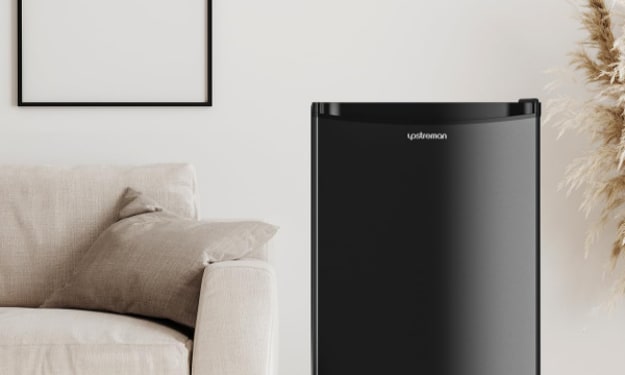
Smartphones have revolutionized the way we live, work, and communicate. They have become an integral part of modern life, providing us with access to an endless stream of information and connecting us to the world around us in ways we never thought possible.
But for blind individuals, smartphones can be even more than just a convenience, they can be a lifeline. With the advent of advanced accessibility features and specialized apps, smartphones are empowering blind people to navigate the world with greater ease and independence. From reading books and articles to identifying objects, or even getting turn-by-turn navigation, smartphones are making it possible for blind people to experience the digital world in a whole new way. The possibilities are endless, and the future is looking brighter than ever for those who are visually impaired.
Accessibility features built into smartphones:
A. Voiceover and Talkback:
Voiceover and Talkback are truly game-changers for blind individuals, allowing them to interact with their phone using only their voice. These features provide an entirely new level of accessibility, making it possible for blind people to navigate through their phone's menus, open apps, and perform other tasks with ease and independence.
With Voiceover, for example, blind users can hear a description of the item currently selected on the screen, such as an app icon or button. This makes it easy to find and open the apps they need. Talkback, on the other hand, allows users to control their phone using gestures, providing audible feedback as the user navigates through the interface. This makes it possible for them to quickly and easily perform tasks such as sending a text message, making a phone call, or even browsing the internet. The possibilities are endless, and these features are truly opening doors for blind individuals to experience the digital world in a whole new way.

B. Magnification and Zoom:
The primary purpose of the magnification and zoom feature is not for identifying objects. However, it can still be a useful tool for blind individuals in certain situations. For example, when shopping, a blind person may have someone with them who can see, this person can use the magnification and zoom feature to read product labels or packaging, and then verbally describe the information to the blind person. This can be helpful when trying to identify a specific product, or when trying to find an item that is similar to something that the blind person is already familiar with.
Additionally, there are also third-party apps that can use the camera of the smartphone along with AI-based technology to identify the object, for example, Be My Eyes, TapTapSee, LookTel Money Reader, etc. These apps allow blind individuals to take a picture of an object and receive an audio description of it, which can be helpful when trying to identify objects or navigate unfamiliar environments.
In summary, while the primary purpose of the magnification and zoom feature is not for identifying objects, it can still be a useful tool for blind individuals in certain situations, especially when they have assistance from a sighted person or through the use of third-party apps.
C. Braille Keyboards and Displays:
Braille Keyboards and Displays are truly a technological marvel, providing blind individuals with a new level of accessibility and independence when it comes to using smartphones. These devices connect to the phone via Bluetooth and allow users to type or read braille on the phone, opening up a whole new range of possibilities for blind individuals.
With a braille keyboard, for example, blind users can write messages, create notes or documents, and send emails with ease. With a braille display, they can read their messages, emails, or even books. This makes it possible for blind people to keep in touch with friends and family, stay on top of their schedule, and even pursue their education or career.
Braille keyboards and displays are truly empowering tools, giving blind individuals the ability to communicate and interact with the world in ways that would have been otherwise impossible. They are also making it possible for them to experience the digital world in a whole new way, providing them with access to an unprecedented amount of information and capabilities.
Third-party apps and services:

There are apps like Voice Dream Reader, KNFB Reader, and others that allow blind individuals to read books, newspapers, and other text aloud, making it easy for them to access the written content. Navigation apps like Google Maps and Apple Maps also have features for accessibility for blind people, providing voice instructions for walking or driving directions. Additionally, there are apps like Be My Eyes, TapTapSee, LookTel Money Reader, etc that can help identify objects, such as giving voice instructions for recognizing the type of currency or identifying products in a store.
These apps and services are truly revolutionizing the way blind individuals experience the world, providing them with access to an unprecedented amount of information and capabilities. They are truly making a difference in the lives of blind people, and the future looks bright as more and more companies and developers are focusing on developing assistive technology for blind people.
Future Developments:
The field of assistive technology for blind users is constantly evolving, with ongoing research and development aimed at further enhancing the usability of smartphones for blind individuals. From the integration of artificial intelligence and machine learning to the use of haptic feedback and virtual reality, the future of assistive technology is looking brighter than ever.
For example, with the integration of artificial intelligence and machine learning, smartphones are becoming better at understanding the user's environment and providing more accurate information. This can be especially helpful for navigation, making it easier for blind individuals to navigate unfamiliar environments. Additionally, new technologies such as haptic feedback, which uses vibrations to provide information, and virtual reality, which creates an immersive experience, are also being explored as a way to provide new forms of input and output for blind individuals. These technologies have the potential to revolutionize the way blind people interact with their environment, providing them with new ways to access information and navigate the world.
So in conclusion, Smartphones are not just a convenience, they are a lifeline for blind individuals. With the help of accessibility features and third-party apps and services, smartphones are empowering blind people to live their lives with greater ease and independence. And with the future looking so bright, So let's raise a glass (or a voice) to the power of technology and the limitless possibilities it provides.
About the Creator
Nova
As an article writer and poet, I am excited to share my knowledge and creativity with the world. I bring accuracy and attention to detail to my writing, thoroughly researching topics for my articles and pouring my emotions into my poems.






Comments
Nova is not accepting comments at the moment
Want to show your support? Send them a one-off tip.